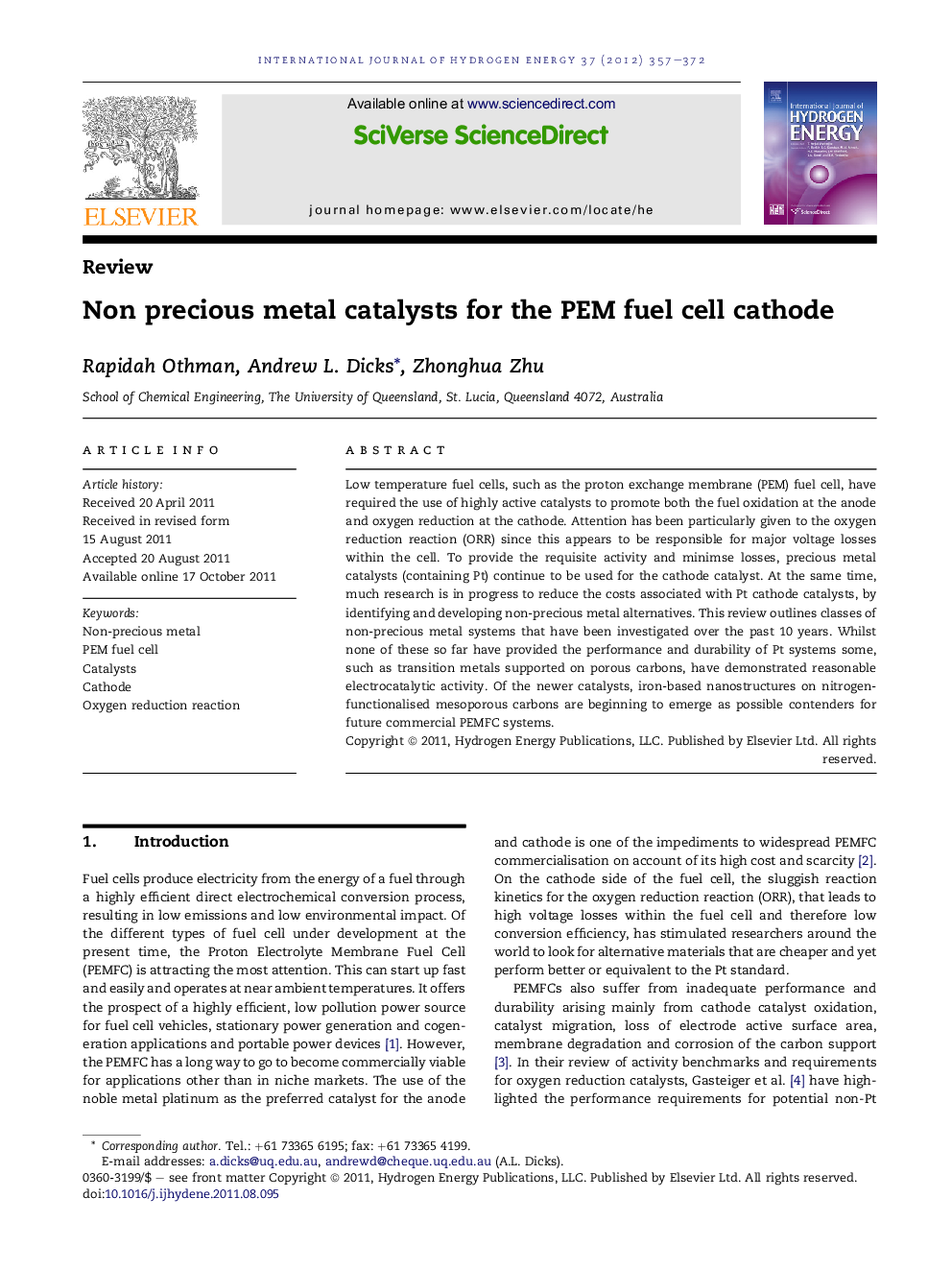| Article ID | Journal | Published Year | Pages | File Type |
|---|---|---|---|---|
| 1277151 | International Journal of Hydrogen Energy | 2012 | 16 Pages |
Low temperature fuel cells, such as the proton exchange membrane (PEM) fuel cell, have required the use of highly active catalysts to promote both the fuel oxidation at the anode and oxygen reduction at the cathode. Attention has been particularly given to the oxygen reduction reaction (ORR) since this appears to be responsible for major voltage losses within the cell. To provide the requisite activity and minimse losses, precious metal catalysts (containing Pt) continue to be used for the cathode catalyst. At the same time, much research is in progress to reduce the costs associated with Pt cathode catalysts, by identifying and developing non-precious metal alternatives. This review outlines classes of non-precious metal systems that have been investigated over the past 10 years. Whilst none of these so far have provided the performance and durability of Pt systems some, such as transition metals supported on porous carbons, have demonstrated reasonable electrocatalytic activity. Of the newer catalysts, iron-based nanostructures on nitrogen-functionalised mesoporous carbons are beginning to emerge as possible contenders for future commercial PEMFC systems.
► This reviews the development of non-precious metal PEMFC cathode catalysts. ► Over the past 10 years six classes of materials have received most attention. ► Iron on nitrogen-functionalised carbon shows particularly high activity.
